If Taiwan’s history were written in 10 nouns, sugar would be one of them.
Back in the 17th century, the Dutch East India Company shipped sugar from their Tainan colony to Japan. The sugar trade continued to grow after the violent expulsion of the Dutch by Cheng Cheng-kung (鄭成功, also known as Koxinga). By the 1870s, when Taiwan was well and truly part of the global economy, Taiwanese sugar was being consumed as far away as Australia and California.
The 1895 to 1945 period of Japanese rule saw massive expansion, to the point where cane plantations covered a fifth of Taiwan’s farmland. During the 1950s, sugar was by a huge margin the country’s most lucrative export.
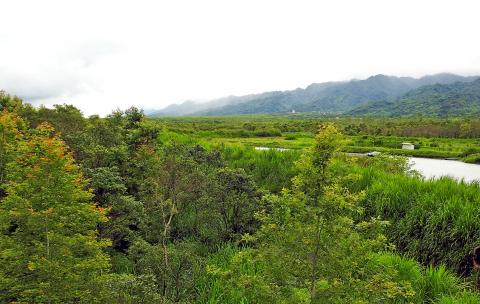
Photo: Steven Crook
After World War II, the Chinese Nationalist Party (KMT) regime that took control of Taiwan consolidated the industry’s 42 sugar factories, narrow-gauge railway network and 114,000 hectares of land into Taiwan Sugar Corporation (台糖, TSC).
Throughout its existence, TSC has been a state-owned enterprise supervised by politicians. It’s fair to assume that, over the past 70-odd years, it’s been less efficient than most private corporations. But if TSC had been privatized — or if each facility or plot of farmland had been sold off as soon as shriveling sugar production meant it was no longer needed — we likely wouldn’t have places like Tsung-Yeh Arts and Cultural Center (總爺藝文中心) in Greater Tainan or Danong Dafu Forest Park (大農大富平地森林園區) in Hualien County.
The private sector would have demolished the beautiful Japanese-era buildings at the former, so they could pack the site with McMansions. The latter is too large and too far from any major city for residential development. But if that part of the East Rift Valley had been opened to profit-seekers, you can bet we wouldn’t be reading reports like the one that appeared in this newspaper on July 19 last year titled “Park reforestation brings back species.” Scientists have discovered small Indian civets, masked palm civets, crab-eating mongooses and other creatures in the forest park.
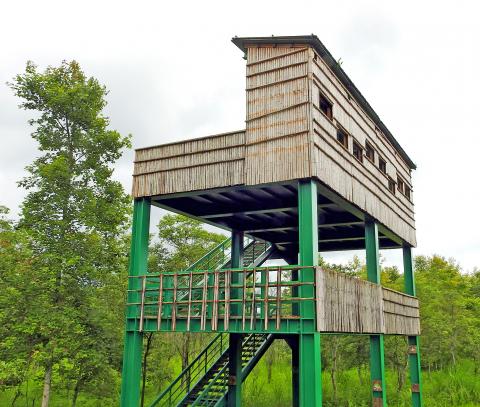
Photo: Steven Crook
One of the linchpins of the sugar industry in east Taiwan was Hualien Sugar Factory (花蓮糖廠). Despite its name, this processing facility — which ceased operations in 2002 — is located in Guangfu Township (光復鄉), about 48 km south of downtown Hualien.
The factory was built in 1921 by Ensuiko Sugar Refining Co (鹽水港製糖株式會社), the smallest of the four Japanese-invested companies that dominated the local sugar industry until 1945. (Ensuiko survived the loss of its assets in Taiwan after 1945 and continues to sell over US$200 million worth of sugar-related products per year.)
In terms of scale, architecture or historical interest, Hualien Sugar Factory doesn’t compare to some of the TSC sites in west Taiwan, yet it has several intriguing features.
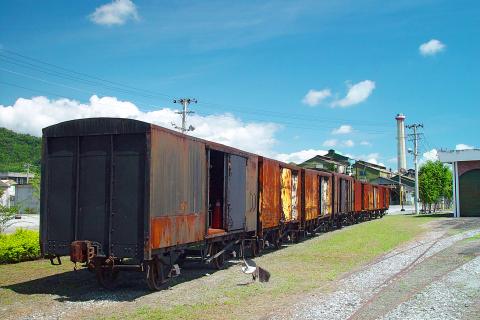
Photo: Hua Meng-ching, Taipei Times
Much of the interior is open to visitors, and if you go inside you’ll see a great deal of old equipment. Among the boilers, crushers, rollers and pulping vats are machines which bear the insignia of the British, German, Dutch and Japanese companies which supplied them.
When sugar is refined, one by-product is molasses. In Taiwan, molasses was often turned into ethanol, and as part of Allied efforts to choke off Japan’s fuel supplies, the US Air Force bombed the factory in Guangfu at least twice in 1945.
If you examine the exterior of the factory’s buildings, you’ll soon find scars left by shrapnel. The two ponds at the center of the complex, where carp now thrive, were originally bomb craters. Next to one of the ponds, there’s a shop which sells TSC’s signature ice creams and popsicles; among the more unusual flavors are taro and sugarcane juice.
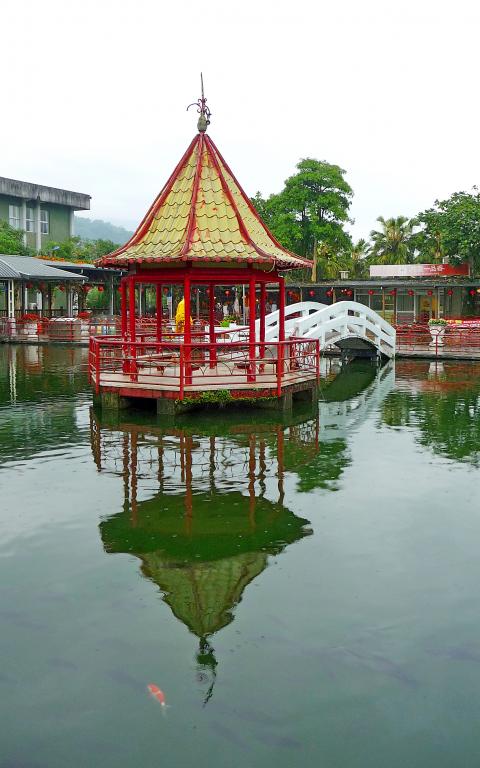
Photo: Steven Crook
For much of the factory’s history, the owners provided employees and their dependents with health care and entertainment. The old clinic building is still standing, as is the meeting hall where movies were often shown. Several years ago, a number of the wooden bungalows that were once assigned to senior staff were thoroughly renovated and converted into a 28-room guesthouse.
When the sugar industry was at its peak, cane plantations covered much of the flat and semi-flat land south of the factory. An afforestation program was launched at the start of the 21st century, and an area of 1,250 hectares between the Hualien-Taitung Railway Line and Road 193 has been designated Danong Dafu Forest Park.
Trees, well over a million of them, have been planted here, as have around 20 native shrub and flower species. What’s being done in the forest park isn’t quite “rewilding,” but I can’t think of another large-scale project in Taiwan that comes closer to restoring land to its natural, uncultivated state.
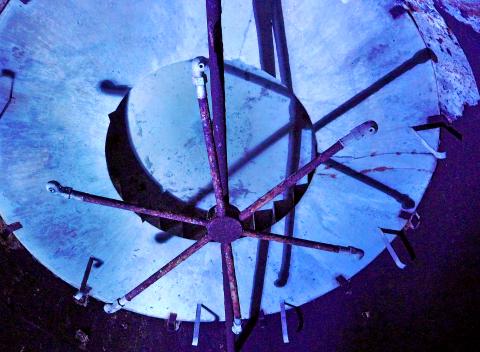
Photo: Steven Crook
An article by Chen Yi-ming (陳一銘), published last year in the Council of Agiculture’s Forestry Research Newsletter (林業研究專訊) adds wild boar, Chinese hares and small-toothed ferret badgers to the list of animals detected inside the forest park. However, three species found in the nearby Coastal Mountain Range (海岸山脈) have yet to be recorded: the Formosan rock macaque (Taiwan’s only monkey); the goat-like Formosan serow and the Chinese pangolin.
Chen called for coordination between different government agencies and local stakeholders to further develop the park’s role as an ecological corridor, while acknowledging that this is complicated by the widening of Highway 9 and the flood-control infrastructure that criss-crosses the landscape. However, culverts can be designed to be accessible to wildlife, and a local environmental group has worked to create ecological space beneath one of the new bridges on Highway 9.
“In May [2018], a yellow-throated marten was found in the [forest park], and this helps us see more clearly the park’s potential as an ecological corridor. The yellow-throated marten is a major forest predator, but long ago went extinct in the Coastal Mountain Range,” Chen reported.
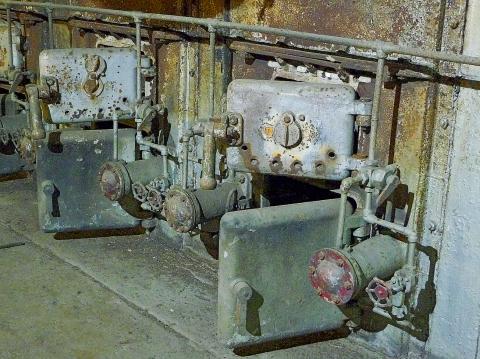
Photo: Steven Crook
He then asked: “Can the yellow-throated marten return to the coastal mountains through [the park]? What impact will it have on the entire ecosystem?”
Admission to the park is free, and the information center is open from 8am to 5pm daily. The multiple entrances seem to be open around the clock, so there’s nothing to stop ecotourists from visiting at first light or at dusk, when the odds of seeing animals are less remote. They should bring binoculars, and leave no trace.
Steven Crook has been writing about travel, culture, and business in Taiwan since 1996. He is the co-author of A Culinary History of Taipei: Beyond Pork and Ponlai, and author of Taiwan: The Bradt Travel Guide, the third edition of which has just been published.

On April 26, The Lancet published a letter from two doctors at Taichung-based China Medical University Hospital (CMUH) warning that “Taiwan’s Health Care System is on the Brink of Collapse.” The authors said that “Years of policy inaction and mismanagement of resources have led to the National Health Insurance system operating under unsustainable conditions.” The pushback was immediate. Errors in the paper were quickly identified and publicized, to discredit the authors (the hospital apologized). CNA reported that CMUH said the letter described Taiwan in 2021 as having 62 nurses per 10,000 people, when the correct number was 78 nurses per 10,000

As Donald Trump’s executive order in March led to the shuttering of Voice of America (VOA) — the global broadcaster whose roots date back to the fight against Nazi propaganda — he quickly attracted support from figures not used to aligning themselves with any US administration. Trump had ordered the US Agency for Global Media, the federal agency that funds VOA and other groups promoting independent journalism overseas, to be “eliminated to the maximum extent consistent with applicable law.” The decision suddenly halted programming in 49 languages to more than 425 million people. In Moscow, Margarita Simonyan, the hardline editor-in-chief of the

Six weeks before I embarked on a research mission in Kyoto, I was sitting alone at a bar counter in Melbourne. Next to me, a woman was bragging loudly to a friend: She, too, was heading to Kyoto, I quickly discerned. Except her trip was in four months. And she’d just pulled an all-nighter booking restaurant reservations. As I snooped on the conversation, I broke out in a sweat, panicking because I’d yet to secure a single table. Then I remembered: Eating well in Japan is absolutely not something to lose sleep over. It’s true that the best-known institutions book up faster

Though the total area of Penghu isn’t that large, exploring all of it — including its numerous outlying islands — could easily take a couple of weeks. The most remote township accessible by road from Magong City (馬公市) is Siyu (西嶼鄉), and this place alone deserves at least two days to fully appreciate. Whether it’s beaches, architecture, museums, snacks, sunrises or sunsets that attract you, Siyu has something for everyone. Though only 5km from Magong by sea, no ferry service currently exists and it must be reached by a long circuitous route around the main island of Penghu, with the